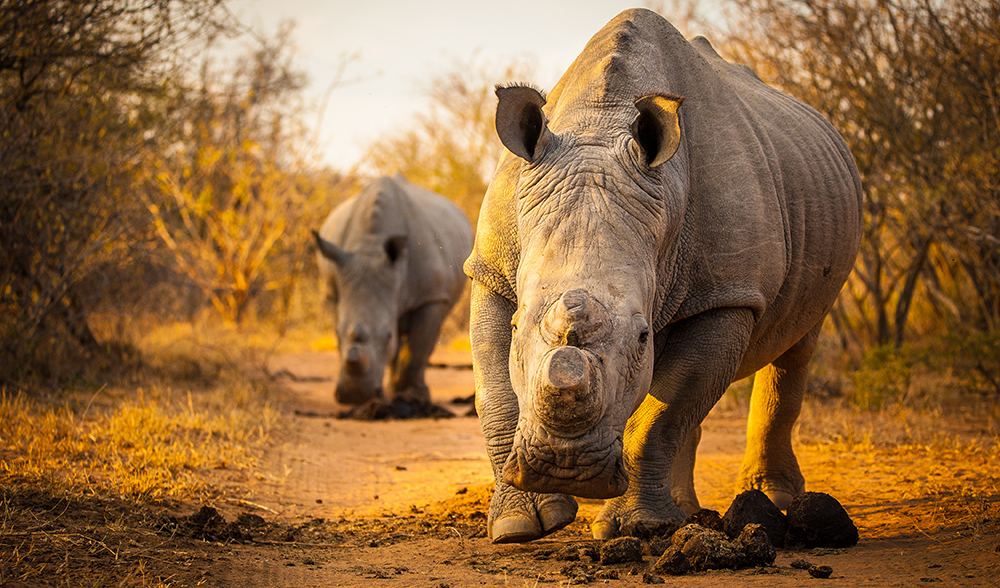NitroX
|
| (.700 member) |
| 21/04/16 05:22 AM |

|
|
|
80 rhinos headed for Australia in bold move to save species

BY SHANNON VERHAGEN |APRIL 07, 2016
Australia is set to be a sanctuary for Africa’s endangered rhinos as poaching operations escalate, killing record numbers for Asia’s illegal horn trade.
IN A WORLD-FIRST conservation effort, 80 African rhinos will be flown to Australia over the next four years to establish an insurance population for the threatened mammals.
It is an ambitious mission – costing $70,000 per rhino and requiring each animal to spend several months in quarantine under the watchful eyes of the South African and Australian Departments of Agriculture.
The Australian Rhino Project was founded in 2013 by South African-born Australian Ray Dearlove, with the aim to establish a breeding herd of black and white rhinos in Australia that will be able to be reintroduced to Africa once the threat of poaching decreases.
New ideas for saving rhinos
Dr Roan Plotz, who undertook his PhD in black rhinos, believes tackling the extraordinary poaching crisis requires out-of-the-box approaches such as the Australian Rhino Project, and breaking the demand for rhino horn in Asia.
But he believes the success of the project will be determined by time and money, and says there is a host of issues to consider – including breeding success and upon reintroduction to Africa, predators, starvation and intra-specific competition, in which members of the same species compete for limited resources.

Baby white rhino photographed in South Africa. (Image: Shannon Wild)
“I think new ideas are absolutely needed to tackle the poaching crisis and make no mistake with the Australian Rhino Project – while a great idea and I applaud their efforts – there is no guarantee that it will ensure the survival of rhino, even if it becomes the last viable population,” Roan said.
Ray stressed the project is not the be-all and end-all of rhino conservation, but one strategy that can contribute to the animals’ survival. “I know that six is not going to change the world, but it’s at least six that won’t be killed,” he said, adding that the first six will be the test that the rhinos can be relocated safely.
Home away from home
Once reaching Australian soil, the rhinos will be taken to Taronga Western Plains Zoo in Dubbo, NSW, where they will spend two months in quarantine, before most likely being relocated to Monarto Zoo’s safari park near Adelaide.
Ray said the partnership with Taronga was win-win – not only does it aid the conservation of the species, it also provides genetic diversity for the zoo’s resident rhino population.
GALLERY: Wildlife in Africa
Australian endangered species list
However, August’s relocation is just the beginning – after the first six are settled, Ray hopes to keep momentum and have another 74 flown down under in the next four years.
Considerable space is required in order to keep the animals relatively ‘wild’ and, while discussions are under way, it is not yet finalised where the remainder will be homed.
“We have a number of opportunities in WA, in the Northern Territory and New South Wales and potentially one in Queensland,” Ray said.
Why Australia?
Although unconvinced anywhere is 100 per cent safe for the animals, Ray said he believes Australia’s strong border-security, the lack of comparable poverty and poaching-free history will make it a much safer option.
Roan adds that Australia provides a range of positives as the rhinos’ home away from home – a similar climate and habitat to Africa, vegetation with the potential to be used as browse, a lack of diseases and parasites that the animals would normally be exposed to and protection from poaching.
“Australia has abundant safety, land, resources (money, people) and is outside of the traditional poaching syndicate links,” he said, adding, “also – Australia will be harder and not as viable an option for syndicates to set up and travel to target one population.”
9000% increase in poaching
More than a million of the iconic animals once roamed the African Savannah, but today the white rhino population is estimated at about 20,000, while the black rhino is in even more strife – with only about 5000 remaining.
It wasn’t long ago that things were looking up for the African rhinos – hefty conservation efforts last century saw the white rhino population recuperate from less than 100 individuals to the 20,000 alive today, bringing it back from the brink of extinction.
However, the escalation of sophisticated poaching operations is posing a huge threat to their existence. “They talk about a ‘tipping point’ – when the kill rate of rhinos exceeds the birth rate,” Ray said.
Bringing Borneo back
Australia's wildlife blackmarket trade
Rhino horn is highly valued in traditional Asian medicine, believed to cure a range of ailments, and can fetch up to $500,000 each – leading to record numbers being killed across the continent.
The figures are staggering – in 2007, 13 South African rhinos fell victim to poachers, but by 2014, that number had jumped to a record 1,215 – a 9000% increase.
“The demand from countries such as Vietnam and China seems to be insatiable – it really does,” Ray said. “So I pray for that, because in many ways there shouldn’t be a need for the Australian Rhino Project – that’s the reality. But since that’s the situation we’ve found ourselves in, if we can do our little bit here in Australia – and I think Australians will – then I think that it’s worth doing.”
http://www.australiangeographic.com.au/n...to-save-species